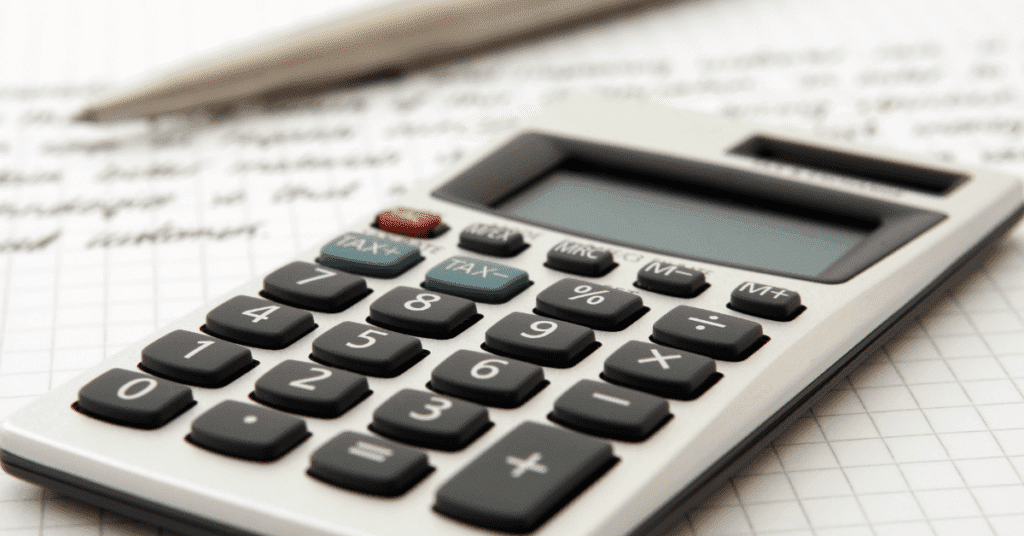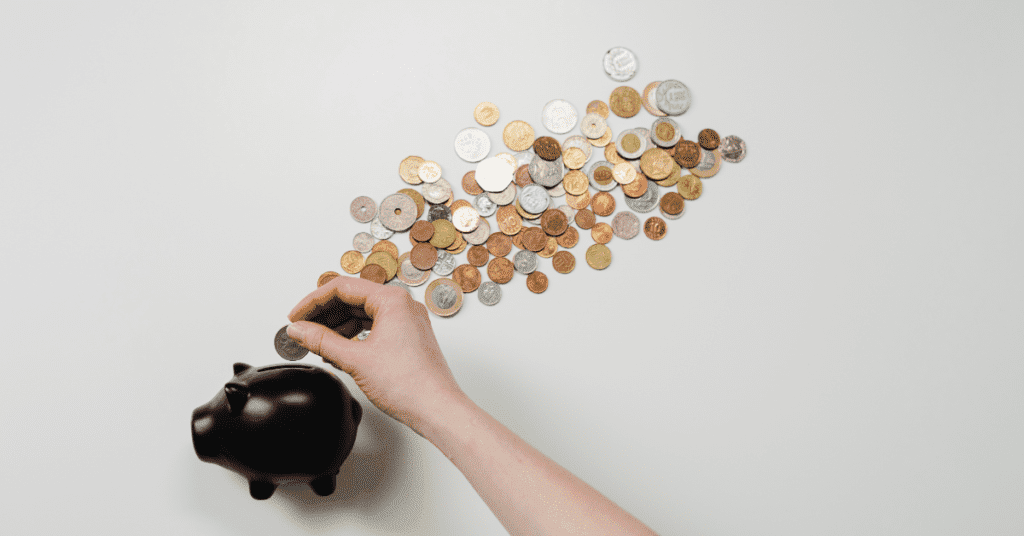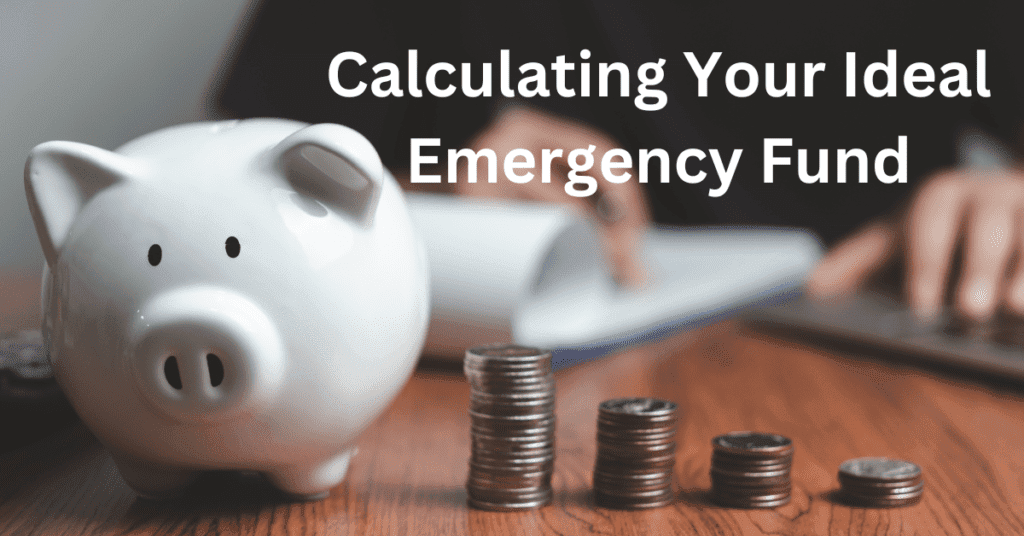Introduction
In a world where uncertainty is the only certainty, having an emergency fund is not just a financial strategy; it's a buffer against life's unpredictabilities. Think of an emergency fund as a financial safety net designed to catch you during unexpected falls in your economic journey. Whether it's a sudden job loss, an unplanned medical expense, or an urgent home repair, an emergency fund can be the difference between a minor hiccup and a financial catastrophe.
The concept of an emergency fund is simple: it's money you set aside specifically for unplanned, urgent financial needs. However, the simplicity of the concept belies the complexity of its execution. One of the most challenging aspects of emergency fund planning is determining just how much you need to save.
This article aims to demystify this process. We will explore the purpose of an emergency fund, discuss how to calculate your ideal fund size and provide strategies for effectively building and maintaining this crucial component of personal finance.
Understanding the Purpose of an Emergency Fund
An emergency fund serves as a financial lifeline in times of unexpected hardship. Its primary purpose is to cover costs that arise suddenly and are not part of your regular budget. Let's delve into the types of situations where having an emergency fund is crucial:
- Job Loss: One of the most significant impacts on your financial stability can come from losing your source of income. An emergency fund can help you stay afloat, covering living expenses while you search for new employment.
- Medical Emergencies: Health issues can arise without warning, leading to unexpected medical bills. With healthcare costs being a major concern for many, an emergency fund can prevent these expenses from turning into crippling debt.
- Home or Car Repairs: Essential assets like your home or vehicle can require unforeseen repairs. An emergency fund ensures that such expenses don't disrupt your financial plan.
- Other Unanticipated Events: Life is full of surprises – some less pleasant than others. Be it a sudden move, legal fees, or any other unplanned expense, an emergency fund helps you manage these without the need for high-interest loans or credit cards.
By providing a cushion against these financial shocks, an emergency fund not only preserves your current savings and investments but also offers peace of mind. Knowing you have a backup can reduce the stress and anxiety associated with financial uncertainties.
Factors Influencing Your Emergency Fund Size
Determining the right size for your emergency fund isn't a one-size-fits-all affair. Several personal factors play into how much you should aim to save:
- Job Stability: If your job or main source of income is unpredictable or commission-based, you might need a larger emergency fund. In contrast, those with stable, predictable incomes might be comfortable with a smaller fund.
- Family Size and Obligations: More dependents mean more potential unexpected expenses. Single individuals might manage with a smaller fund, while those supporting a family should consider a larger one.
- Monthly Expenses: Your regular monthly expenses are a key determinant. The higher your monthly obligations, the larger your emergency fund should be to cover several months' worth of expenses.
- Lifestyle and Spending Habits: If your lifestyle includes frequent discretionary spending, you may need a larger emergency fund to adjust for potential cutbacks in times of need.
- Health and Insurance Coverage: Good health insurance can reduce the need for a large medical emergency fund. However, if your coverage is limited, you might need to save more.
- Existing Debts: High levels of debt may necessitate a larger emergency fund, as financial surprises could make it harder to meet debt obligations.
Understanding these factors helps tailor your emergency fund to your specific situation, ensuring that it’s adequately sized to provide the necessary financial support when you need it most.
Calculating Your Monthly Expenses

A critical step in determining the size of your emergency fund is to accurately calculate your monthly expenses. This process involves a clear understanding of both your fixed and variable costs:
- Fixed Expenses: These are your non-negotiable monthly costs and include rent or mortgage payments, insurance premiums, loan repayments, utilities, and other recurring bills. These expenses are relatively constant each month and form the backbone of your emergency fund calculation.
- Variable Expenses: These costs fluctuate month to month and encompass items like groceries, fuel, entertainment, dining out, and other discretionary spending. While variable, it’s crucial to average these expenses to get a realistic picture of your monthly outgoings.
Here’s how to calculate your monthly expenses:
- List all your expenses
- Categorize and total your expenses
- Average your variable expenses
- Add it all up
Setting the Emergency Fund Target
Once you have a clear understanding of your monthly expenses, the next step is to establish a target amount for your emergency fund. This is where the rule of thumb of three to six months' worth of expenses comes into play. Here's how to set your target:

- Basic Emergency Fund: For most individuals, a basic emergency fund should cover three to six months' worth of essential living expenses. This includes your total monthly expenditure calculated in the previous step.
- Extended Emergency Fund: In certain situations, you might consider saving for an extended emergency fund, which covers six to twelve months of expenses. This is particularly advisable if you have a less stable job, are self-employed, or have high family obligations.
- Tailoring to Your Needs: Your ideal emergency fund size should reflect your circumstances. Factors like job stability, the number of dependents, and overall financial obligations should influence your decision.
- Setting a realistic target: It’s important to set a realistic target based on your financial situation. While it's good to aim high, setting an unachievable goal can be discouraging. Start with a smaller target and gradually increase it as your financial situation improves.
Remember, an emergency fund aims to provide a financial cushion that prevents you from resorting to high-interest debt in times of crisis. It's a critical part of a solid financial plan, offering peace of mind and security against life's unexpected turns.
Strategies to Build Your Emergency Fund
Building an emergency fund can seem daunting, but with the right strategies, it's an achievable goal. Here are some effective methods to help you grow your emergency fund:
- Reduce Expenses: Review your budget and identify areas where you can cut costs. Simple changes, like cooking at home instead of dining out, can free up significant amounts of money to divert toward your emergency fund.
- Increase Your Income: Explore ways to boost your income, such as by taking on freelance work, selling unused items, or pursuing a side hustle. Extra earnings can accelerate the growth of your emergency fund.
- Use Windfalls Wisely: Allocate unexpected windfalls, such as tax refunds, bonuses, or gifts, to your emergency fund. These infusions can help you reach your target faster without impacting your regular budget.
- Monitor and Adjust Your Contributions: Keep track of your savings progress and adjust your contributions as needed. If your financial situation improves, consider increasing your monthly savings rate.
- Keep the Fund Accessible but Separate: Store your emergency fund in an account that's separate from your regular checking account but still easily accessible. This prevents accidental spending while ensuring the funds are available when needed.
- Automate Your Savings: Set up automatic transfers from your checking account to your emergency fund. Determine a fixed amount or percentage of your income to be transferred every payday. Automation takes the decision-making out of the process and helps build your fund consistently.
By implementing these strategies, you can steadily build your emergency fund, enhancing your financial security and preparedness for unexpected expenses.
Choosing the Right Place to Save Your Emergency Fund
Selecting the right savings vehicle for your emergency fund is as important as the fund itself. The ideal location for your emergency savings balances accessibility, return, and safety.
- High-Yield Savings Accounts: These accounts typically offer higher interest rates than standard savings accounts, allowing your emergency fund to grow while still being easily accessible. Look for accounts with no monthly fees and easy withdrawal options.
- Money Market Accounts: These accounts often provide slightly better returns than regular savings accounts and still offer good liquidity. They're a good middle ground between earning interest and having access to your funds.
- Certificates of Deposit (CDs): If you have a larger emergency fund, you might consider putting a portion in a CD for higher interest rates. However, remember that CDs lock your funds for a set period, which might not be ideal for emergency savings.
- Consider Liquidity and Risk: The primary goal of an emergency fund is liquidity—the ability to access your money quickly and without penalties. Risk is also a crucial factor; your emergency fund is not the place for risky investments.
- Diversify Within Reason: Depending on the size of your emergency fund, it might make sense to diversify across a couple of different accounts or financial products. However, remember that simplicity and accessibility are key.
- Regularly Review Your Choices: As interest rates and market conditions change, so should your choices for where to keep your emergency fund. Regularly review your savings vehicle to ensure it still meets your needs.
Choosing the right place to save your emergency fund is about finding the right balance that fits your financial situation and goals.
Establishing a Realistic Saving Timeline
Creating a timeline for your emergency fund is about setting achievable goals and making consistent progress. Here's how to establish a realistic timeline:
- Assess Your Current Financial Situation: Begin by understanding your current income, expenses, and saving capacity. This assessment forms the basis of how much you can realistically save each month.
- Set a Target Date: Based on your emergency fund target and monthly saving capacity, set a realistic date by which you aim to reach your goal. This provides a clear timeframe and helps maintain focus.
- Create Milestones: Break down your overall target into smaller, manageable milestones. For instance, if your goal is to save $6,000 in a year, set a milestone of saving $500 each month.
- Adjust Spending Habits: Identify non-essential areas where you can cut back to redirect more funds into your emergency savings. Every little bit helps you reach your target sooner.
- Review and Adjust Regularly: Life is dynamic, and so should your savings plan. Regularly review your progress and adjust your saving timeline as necessary, especially if your income or expenses change.
- Celebrate Milestones: Recognize and celebrate when you hit your milestones. This keeps you motivated and acknowledges your commitment to building financial security.
By following these steps, you can create a saving timeline that is tailored to your financial situation, making the goal of building an emergency fund both achievable and less overwhelming.
Maintaining and Utilizing Your Emergency Fund
Once you’ve successfully built your emergency fund, it’s essential to manage it effectively. Here’s how to maintain and use your emergency fund responsibly:
By adhering to these guidelines, you can ensure that your emergency fund remains a reliable source of financial security, ready to support you during life's unexpected challenges.
Conclusion
Building and maintaining an emergency fund is a crucial aspect of sound financial planning. It provides a buffer against life's unforeseen events, offering peace of mind and stability. By understanding your unique financial situation, setting realistic goals, and diligently saving, you can create a safety net that protects you and your loved ones. Remember, the journey to financial security starts with the first step. Begin building your emergency fund today, and pave the way for a more secure tomorrow.
FAQ
What is Emergency Fund Planning?
Emergency Fund Planning is the process of setting aside a specific amount of money to cover unforeseen expenses or financial emergencies, ensuring financial stability.
How much should I save in my Emergency Fund?
Typically, it's recommended to save three to six months' worth of living expenses in your emergency fund, adjusted based on personal circumstances like job stability and family size.
Where should I keep my Emergency Fund?
Your emergency fund should be kept in a safe, easily accessible account, such as a high-yield savings account or a money market account, to ensure liquidity and security.
When should I use my Emergency Fund?
Use your emergency fund for genuine financial emergencies, such as unexpected medical bills, job loss, or urgent home repairs, to avoid incurring debt.



